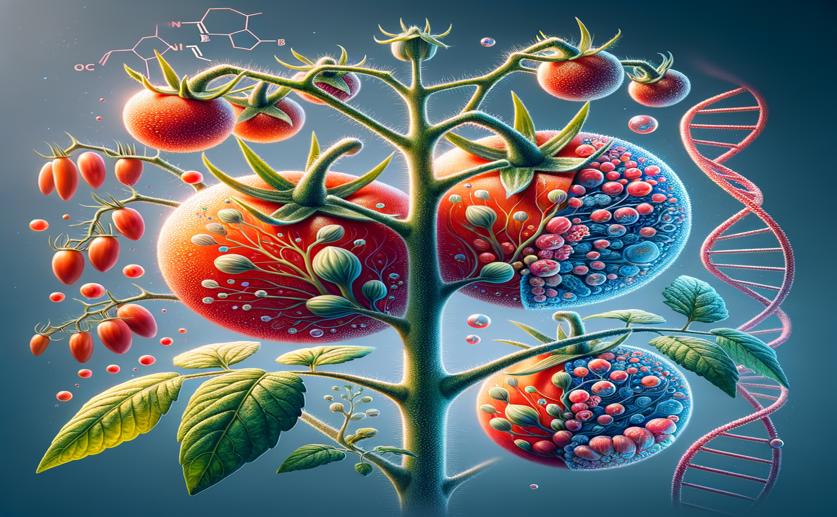
How Tomato Genes BBX16 and BBX17 Affect Plant Reproduction
Jim Crocker
24th June, 2024

Image Source: Natural Science News, 2024
Key Findings
- The study by the University of Verona focused on the impact of two microProteins, SlBBX16 and SlBBX17, on flowering and fruit development in Arabidopsis and tomato plants
- Overexpression of SlBBX16 and SlBBX17 in Arabidopsis delayed flowering, similar to the effect of native BBX microProteins miP1a and miP1b
- In tomato plants, SlBBX17 prolonged the flowering period and reduced the number and size of ripe fruits, while SlBBX16 delayed fruit production up to the breaker stage
VegetablesGeneticsPlant Science
References
Main Study
1) Involvement of the tomato BBX16 and BBX17 microProteins in reproductive development.
Published 21st June, 2024
https://doi.org/10.1016/j.plaphy.2024.108873
Related Studies
2) Functional characterisation of HvCO1, the barley (Hordeum vulgare) flowering time ortholog of CONSTANS.
3) Anti-angiogenic effects of two cystine-knot miniproteins from tomato fruit.
4) Four Tomato FLOWERING LOCUS T-Like Proteins Act Antagonistically to Regulate Floral Initiation.
5) BBX proteins in green plants: insights into their evolution, structure, feature and functional diversification.



 7th May, 2024 | Jenn Hoskins
7th May, 2024 | Jenn Hoskins